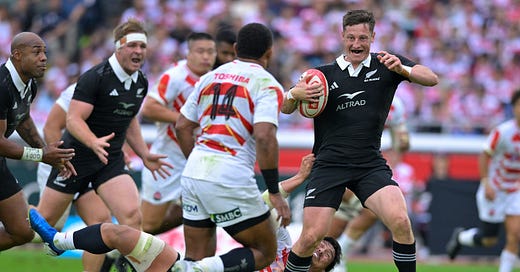ABs avoid Shibuya meltdown, eye bigger tests
Some thoughtful Black Caps correspondence, netball dominance, NRL intransigence and Lawson impertinence.
There was an All Blacks test in the weekend, albeit one that felt very much like a commercial obligation.
As a rule, we should have no problem with the All Blacks spreading the gospel and deigning to play tier-two teams. The world needs more of the big teams travelling to play developing nations, but…
Keep reading with a 7-day free trial
Subscribe to The Bounce to keep reading this post and get 7 days of free access to the full post archives.




